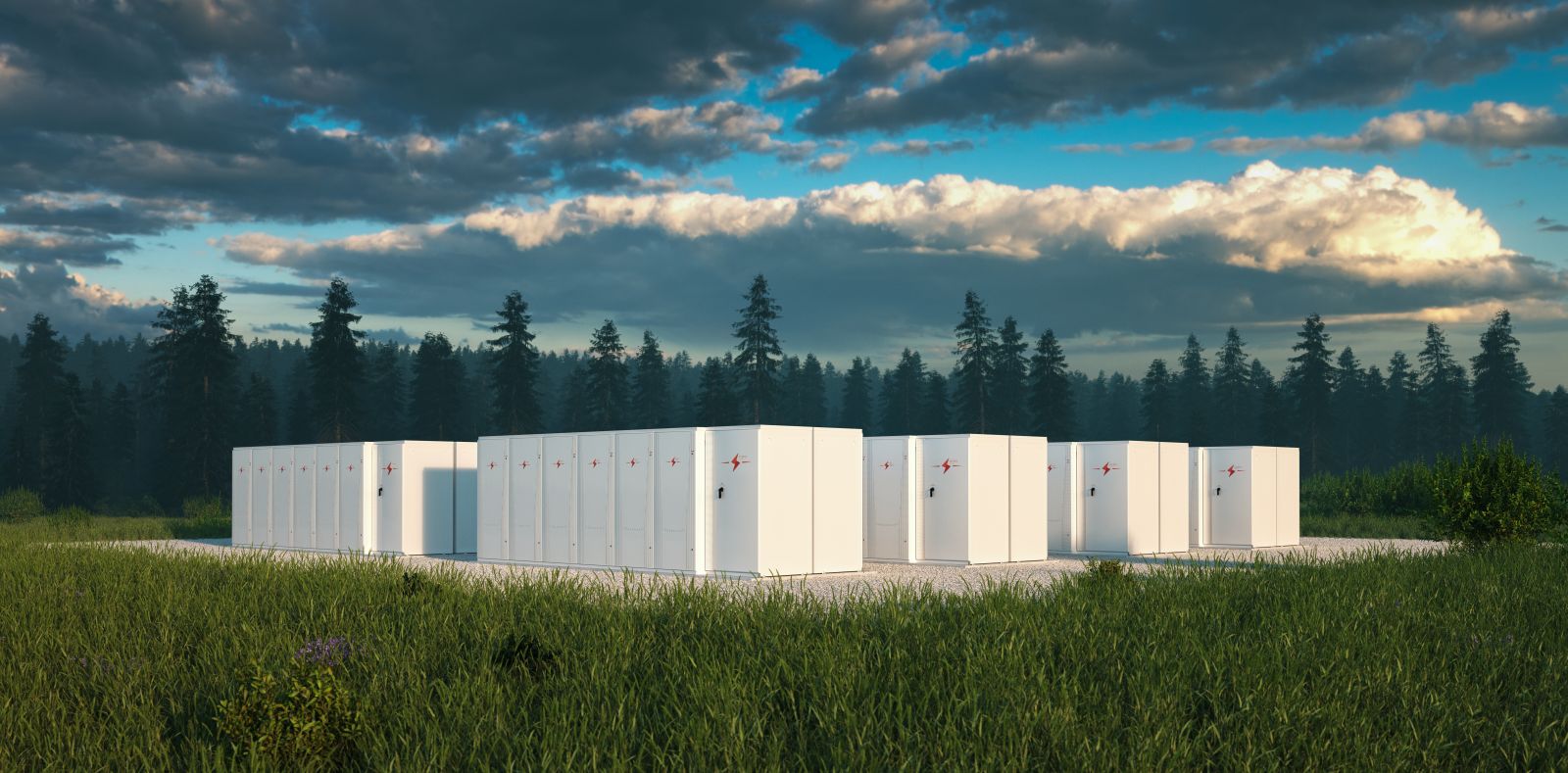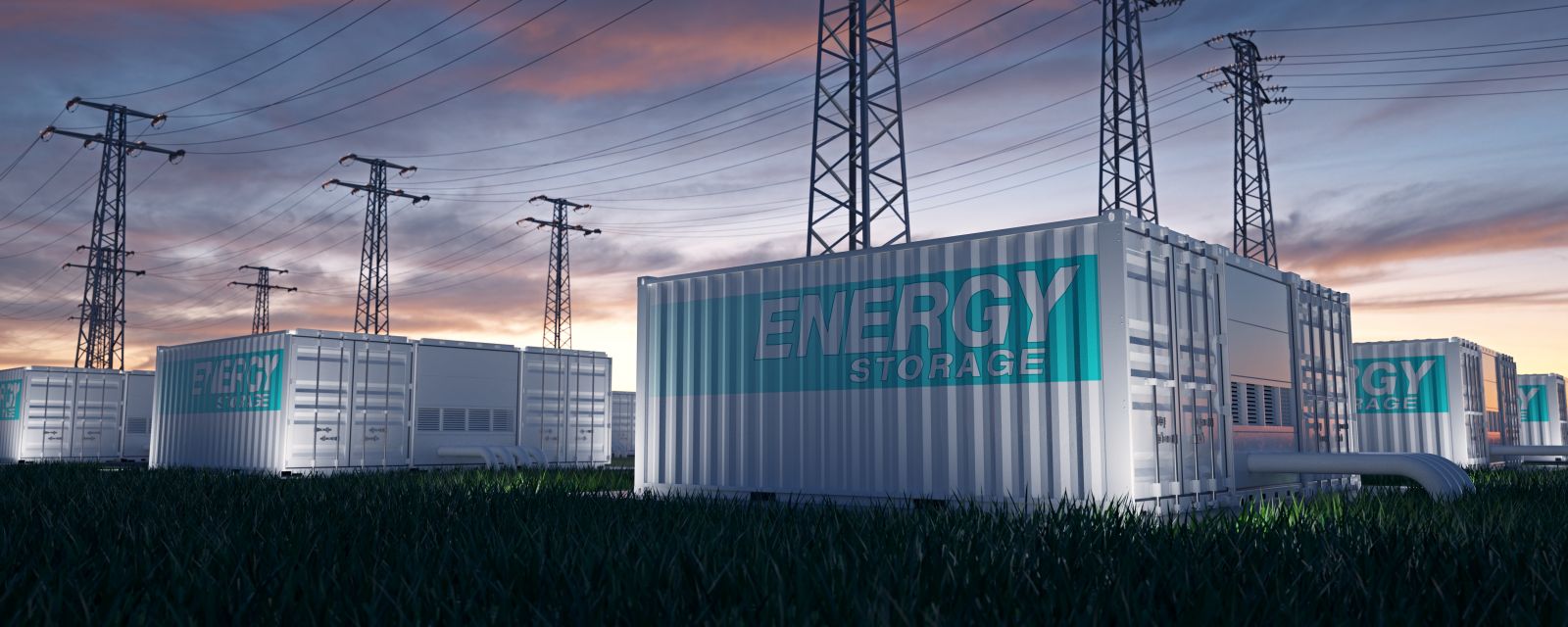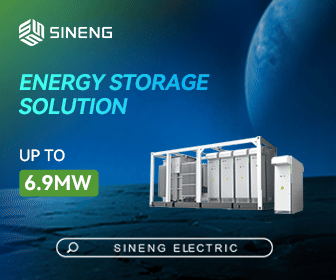When Will Energy Storage Reach Its Full Potential?
As our ability to capture and convert power has evolved, so too, has our ability to store it. Utility-scale Lithium-Ion batteries can store and release power on a scale that gives them value not only in market participation, but also in ensuring the reliability of our utility systems. Investors, utility providers, and customers alike could all stand to gain from the wider implementation of utility-scale energy storage.
The concept of grid scale battery-based energy storage was first introduced with Project Carina in 2008. The project consisted of two 1MW, 15-minute duration systems, for a total of 2MW, 15-minutes (or 1MW, 30 minutes). It was the first grid-connected Lithium-Ion energy storage project in the world.

The strategy has expanded in the years since, and there are now over 1,600 large-scale energy storage systems in operation worldwide. But the full value attainable from utility-scale energy storage is yet to be realized; policy silos the classification of storage devices for use in market participation or transmission reliability, but rarely for both.
Market Incentives
Though the Project Carina facility was designed only to increase system reliability, storage facilities can also offer the benefit of being able to charge when energy costs and demand are low. Energy can then be released when energy prices and demand are high. This kind of market participation creates an opportunity for investors to capitalize on the routine fluctuations of the utility market. The Electric Reliability Council of Texas (ERCOT), which serves approximately 90 percent of the state’s market, has provided a strong market for energy storage market participation. With increased demand on Texas’s grid, the retirement of conventional generators, and the rise in intermittent renewable energy coming onto the grid, the volatile Texas utility market is a prime domain for energy storage investors.
Markets also provide battery owners with incentives to draw energy from the system at times when system stability is needed, helping to maintain the stability of the grid. In some cases, battery owners can collect a fee for storing energy in case it’s needed for an emergency, though this is typically reserved for more sophisticated markets where processes are carefully measured to create policy that funds the services, and provides rewards to offset the use of the battery for other purposes.
Reliability of Service
In addition to market participation, the energy industry recognizes that utility scale batteries can, in certain circumstances, help defer the need to build additional transmission. When electricity usage grows in a region, transmission planners predict when a transmission line could become overloaded. This process might show 2-4 times per year, when peak usage is greater than the transmission line’s capacity. While the traditional response would be to construct a new transmission line, there are situations where the issue could be better met with an energy storage system.
Transmission can be challenging, costly, and time consuming to route through urban environments. Batteries have a smaller footprint, and can be a very cost-effective way to offset transmission. In these scenarios, installing a utility-scale battery – rather than building a new transmission line – could save ratepayers money and time by releasing energy during those 2-4 days of peak load.

Stackable Value
The stackable value of utility-scale storage is not a new concept. Simply put, the cost of a storage asset is constant, as is the value that it can provide in both market incentives and reliability benefits. By contributing supplemental power to meet extreme demand and offset transmission, energy storage offers consumers more reliable access to power. And by creating the opportunity to conserve and release energy based on market conditions, it offers battery owners and investors revenue through market participation. Often referred to as “stackable value,” this combination of factors makes the incorporation of utility-scale energy storage into energy projects very advantageous.
Organized markets, such as Regional Transmission Organizations (RTOs) and individual utilities, have tried to simultaneously capture both the market and reliability benefits of energy storage. The California Independent System Operator (CAISO) is a strong supporter of stackable value, and has interest in batteries that provide both reliability and market participation. CAISO and the California Public Utilities Commission have actively worked to allow battery owners to achieve the full stackable value of storage projects, and may be one of the markets that pioneers such a policy perspective.
One major challenge to realizing full stackable value is that market participation policy is often firewalled from policy designed for reliability assets. For example, transmission is often owned as a regulated asset and paid for by customers. These assets are often firewalled from the risk-and-reward behavior found in assets used for market participation. When it comes to rules for reliability and rules for risk, utility-scale storage can provide value in both scenarios.
Changes in Utility-Scale Storage Policy
.jpeg) One obstacle to utility-scale energy storage reaching its full potential arises from orders and interpretations enacted by the Federal Energy Regulatory Commission (FERC). Up until 2020, requests to qualify storage facilities as transmission facilities had been handled on a case-by-case basis. A tariff provision filed by the Midcontinent Independent System Operator (MISO) seeks to change that by allowing storage to be treated as a transmission resource.
One obstacle to utility-scale energy storage reaching its full potential arises from orders and interpretations enacted by the Federal Energy Regulatory Commission (FERC). Up until 2020, requests to qualify storage facilities as transmission facilities had been handled on a case-by-case basis. A tariff provision filed by the Midcontinent Independent System Operator (MISO) seeks to change that by allowing storage to be treated as a transmission resource.
MISO’s proposal would allow the storage device’s cost to be recovered through cost-based transmission rates, a concept that’s gaining support from other Independent System Operators (ISOs) and RTOs across the country. Also gaining support is the “dual-use” designation for energy storage facilities. Dual-use refers to an energy storage device’s ability to capture its full stackable value and offer services both in the energy marketplace and in transmission reliability. For dual-use to function effectively, there would need to be metrics and controls in place to assure the device would be able to provide transmission or reliability services when needed. There would also need to be regulation to assure that power supplied from storage devices is priced competitively for the benefit of ratepayers.
There is still much unrealized potential for utility-scale energy storage. It’s up to policy makers and industry leaders to bridge the split in the value of battery ownership. By effectively and safely removing the firewall between reliability and market participation, and allowing for a wider implementation of storage systems, battery owners could not only maximize revenue, but help strengthen and stabilize the grid as well. Ultimately, this effort would lower utility bills while efficiently improving our energy infrastructure.
Steve Drew is the Vice President of Market Strategy at Redeux Energy, a utility-scale solar and storage development company that transforms greenfield, brownfield, and industrial lands into renewable power infrastructure.
Redeux | redeuxenergy.com
Author: Steve Drew
Volume: 2023 January/February









